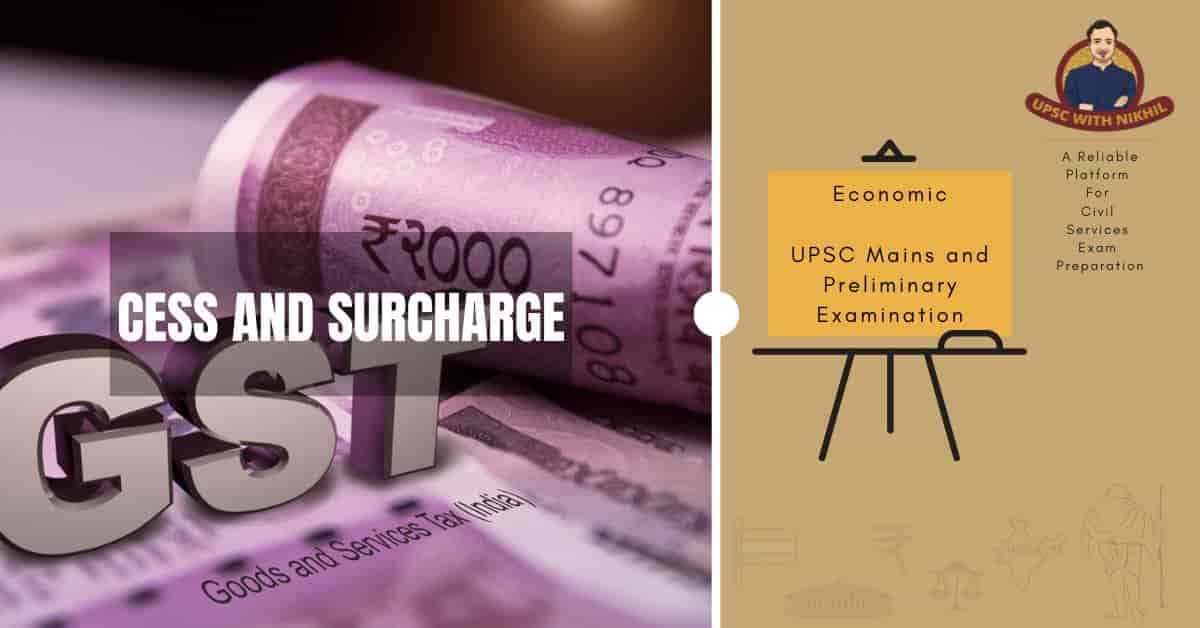Cess And Surcharge
Cess and surcharge are taxes levied by the Union government to raise funds for government services. Although Cess and Surcharge add to the revenue of the government, they are different in many ways.
What Do You Mean By Cess?
• A cess is a tax on a tax in basic terms.
• It is important to remember that the tax will be applied only for the purpose for which it was imposed.
• For example, the Indian government collects education tax and uses it only for that, i.e. education. In addition, this tax is imposed on all taxpayers.
• The taxes are paid to the Consolidated Fund of India.
• The Cess is generally expected to be charged until the government has a sufficient target and becomes inactive once the target is met.
• A tax is distinguished from other taxes such as excise duty and income tax because it is levied in addition to current tax (tax on tax). For example, a 5% education tax on a 20% income tax would raise the tax to 21%. (tax of 20% plus 5% (cess) of 20%).
• Education cess, Road cess, Infrastructure cess, Clean Energy cess, Krishi Kalyan cess and Swachh Bharat cess are the main cesses currently in place.
There Are Different Types Of Cess Levied In India. They Are:
• Property or Infrastructure cess
• Krishi Kalyan Cess
• Export cess
• Road Cess
• Tobacco and tobacco products
• Cess for health and education
• Cess on crude oil
What Are Surcharges?
In case of people earning net taxable salary of more than Rs 1 crore, a rebate of 10% is payable on tax liability.
• Interest is paid at the rate of 5% in real estate companies if the income is between Rs 1 cr to Rs 10 cr. If the net income exceeds Rs 10 cr, 10% rate is charged.
• Interest is paid at the rate of 2% in foreign companies if the income is between Rs 1 cr and Rs 10 cr.
• If the net income exceeds Rs 10 cr, the surcharge is increased to 5%. Domestic and foreign companies are given ‘Marginal relief’ if the net income is more than Rs 1 cr and Rs 10 cr.
• Taxation through Surcharge on income tax is the main source of government revenue.
• This money is collected for whatever purpose the Union Government sees fit.
• It should be noted that it only applies to tax owed, not to all income.
• This money is paid in the Consolidated Fund of India which can be used for any purpose.
• A 10 percent surcharge on 30 percent of income tax, for example, raises the tax burden to 33 percent.
What Are Similarities Between Cess And Surcharge?
• Both are levied by Central government.
• Both are collected and deposited in the Consolidated Fund of India, none of these will be shared by the state government.
What Are Difference Between Cess And Surcharge?
The difference between cess and surcharge is as follows:
|
Cess |
Surcharge |
|
Cess Rate is Fixed. |
The surcharge rate varies as per the brackets in which the people fall. |
|
Authorities calculate cess on the surcharge and the total tax. |
A surcharge is calculated on the total tax amount only. |
|
Cess is levied on everyone. |
Only higher income brackets face Surcharge. |
|
Cess is used for a specific purpose only. It cannot be used for any other reason. |
The surcharge can be used for any reason that the government finds fit. |
|
Cess is aimed at public welfare. |
Surcharge aims to tax high earning individuals. |
Issue With Cess And Surcharge To Be Included In The Tax Devolution Pool
The power to levy and collect both direct and indirect taxes is under the union list ( central government ), provided under Article 246 of the Indian Constitution as part of the allocation of power and duties between the union and states( seventh schedule).
This has created a huge imbalance in the mobilization of the government's fragile resources in meeting their fiscal commitments ( i.e. social expenditure duties.)
The net proceeds of tax (also known as the net tax return) are calculated by substracting cesses and surcharges from gross tax revenue, as well as the recovery rate and are transfered to the National Disaster Response (NDRF) Fund.
So,large pools of cess and surcharges decreases total amount of divisible taxes, minimizing the resource transfer to states.
According to the XV Finance Commission, the state is responsible for more than 62% of the expenditure but only 37% of the earning power, while the central government has 63% of the earning power to spend 38%of expenditure.
Despite the increase in cesses and surcharges from Rs 49,628.02 crore in 2010-11 to Rs 3.74,471.14 crore in 2021-22, the benefits do not accrue to the state as cess and surcharges are not included in this divisible pool.
Over the years, states have been consistently requesting the union governments to either scrap the system altogether or, if they continue for too long, then bring them into the divisible pool.
States will receive a large share in the distribution of net income fom the Center as a result of this participation, helping them to achieve the task of social and infrastructure development.
By bringing about a constitutional amendment, the 14th and 15th Finance Commissions recommended that the income from cesses and surharges be included in the distributable amount.
Conclusion
Cess and surcharges are two ways for the government to increase their revenue. The Union Government may apply and use such proceeds for such purposes as it deems necessary. Even in an emergency, these methods can be very important to the government. Given the limited capacity of the state to generate new infrastructure, the Center should take steps to include the cesses and surcharges in this divisible pool.



